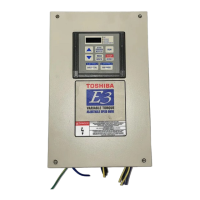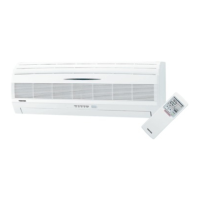AO #10..Accesses the EIII’s process (PID) deviation upper limit parameter (PvUL in
Gr.Fb).
AO #11..Accesses the EIII’s process (PID) deviation lower limit parameter (PvLL in
Gr.Fb).
AO #12 and AO #13......The N2 interface provides a configurable "loss of
communications" timer function, which can detect communication losses
and perform certain actions if a valid N2 packet is not received and
processed within a set time period.
AO #12 sets the loss of communication time value (adjustable from 100ms
to 60.000s in 1ms increments, factory setting = 1.000s). If a valid (error-free)
N2 reception-response cycle does not take place within this time limit, the
timer will expire. If the timer expires, 5 possible actions can occur, as set by
the value AO #13 (loss of communications timeout action):
AO #13
Setting
Action Taken Upon Timeout
0 (default) No action: ignore timeout.
1 Flash "t" (communications warning indicator) on LED display
only.
2 Flash “t" on LED display, stop EIII with decelerated stop.
3 Trip "Err8” (communication interface card error). Note that the
EIII must be reset locally in this case.
4 Flash “t" on LED display, set AO #1 (frequency command) to
400.00Hz (CAUTION!). Note that the actual internal frequency
command will be limited by the upper limit frequency
(parameter UL in Gr.F).
Setting 0 is the default setting; when a communications timeout occurs, no
action will be taken (function is disabled).
For setting 1 (flash "t" on LED display only), this condition will continue until
the next error-free N2 packet is received and responded to. The warning
condition will then be removed and the timer value reset.
For setting 2 (flash "t" on LED display, stop inverter with decelerated stop),
the "t" warning will act as described in setting 1, but BO #1 (run/stop
command) will also be set to 0 (stop). Note that the inverter stop condition
will not be reset when an error-free N2 network packet is once again
received and responded to. Note that although BO #1 is set to 0, this will
cause the EIII to actually stop only if AO #5 or parameter command mode
selection (CMOd in Gr.Ut) is set to 3 (communication interface input valid).
The EIII will then remain stopped until commanded otherwise by the NCU.
Setting 3 does not depend on the command mode selection (AO #5 or CMOd
in Gr.Ut) or frequency mode selection (AO #6 or FMOd in Gr.Ut) parameters.
Note that the “Err8” (communication interface card error) fault can only be
cleared locally at the inverter.
Setting 4 will cause the Metasys N2 interface to automatically change the
option frequency command (AO #1) to 400.00Hz upon a timeout occurrence.

